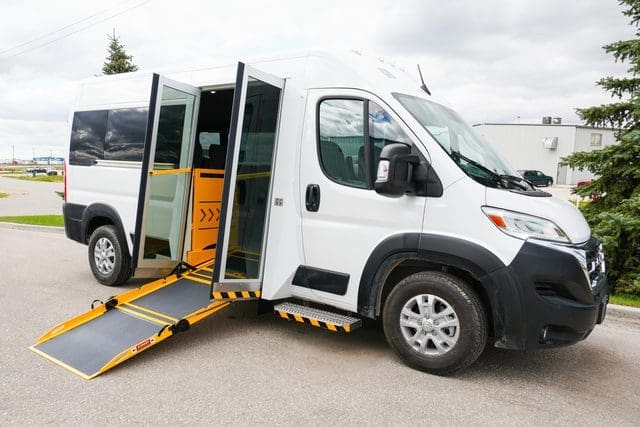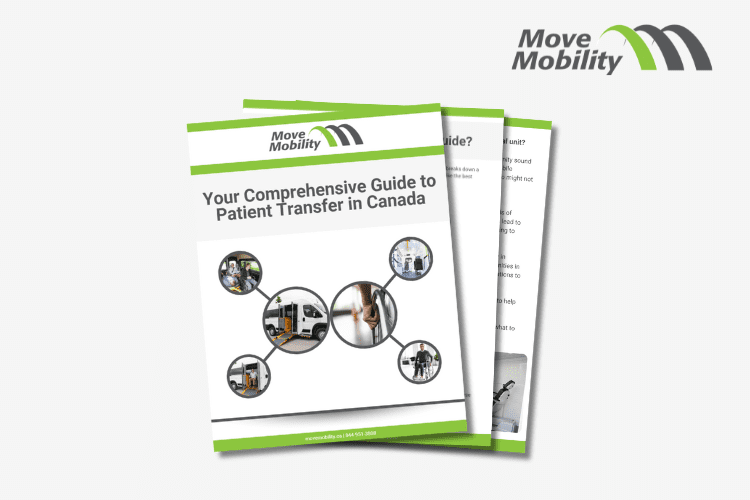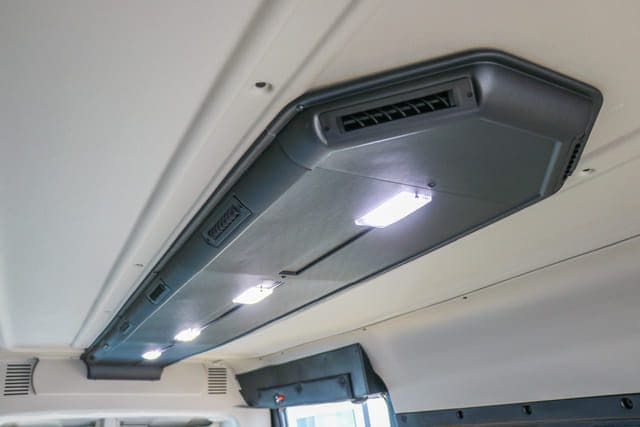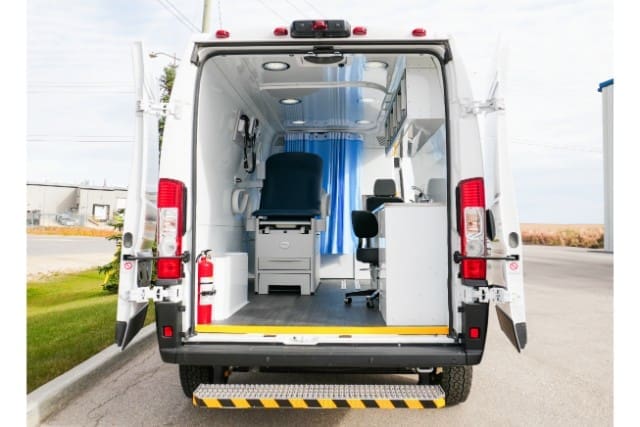Did you know the public RFP process in Canada can take up to 280 hours from beginning to completion? That’s a long time when your team needs an accessible vehicle now. Maybe you’re running a health program or transportation service. You want to serve more people, but the RFP process feels like a slow-moving train. You’re stuck waiting, filling out forms, and hoping everything works out for the best.
Here’s the gap: While you’re waiting, people in your community still need help. Appointments get missed. Staff feel the pressure. Your current vehicle might be unsafe or no longer working. It’s frustrating, and it feels like you’re spinning your wheels.
That’s where we come in. At MoveMobility, we’ve helped organizations like yours and Quest Community Health Centre across Canada for over 20 years. From mobile clinics to wheelchair-accessible vans, our vehicles are built with care and purpose. We’re all about listening to your concerns first, building second, and focusing on removing barriers to care and transportation. We know we’re not the only manufacturer out there, so this article is here to inform, not sell.
By the end of reading this article, you’ll have a better idea of whether you can buy an accessible vehicle without the public RFP process.
What is a public RFP in the world of accessible vehicles?
A public RFP (Request for Proposal) is a formal process some organizations must follow when making purchases, like a wheelchair-accessible van or mobile medical unit. It’s common for government organizations, First Nations, health authorities, or nonprofits that use public funding.
Here’s what that usually looks like:
- You write a detailed request: This outlines what kind of vehicle you need, how it should work, and any special features.
- You post it publicly: This invites suppliers or builders (like us) to submit proposals that show how we’d meet your needs.
- You wait for bids: Companies send in their proposals, usually over several weeks or months.
- A review team scores them: They go through all the submissions and pick the one that checks the most boxes.
- Then comes the approval process: Sometimes, even after picking a proposal, you need more approvals before you can place your order.
This process is meant to be fair and open. But when you’re short on time, staff, or resources, it can feel like it slows everything down.
Up next, let’s look at how you can buy accessible vehicles without a public RFP.
How can you buy accessible vehicles without a public RFP?
Buying an accessible vehicle through a public RFP takes a long time. You’ve got layers of red tape, approvals, paperwork, and back-and-forth emails. And if you’re a busy healthcare or transportation organization, you probably don’t have extra time or extra hands to get through it all.
Let’s walk through the traditional process step by step. Then, we’ll show you how Canoe Procurement helps you get your vehicle faster without cutting corners.
Step 1: Identify the need
This is the easy part. You know your team needs a wheelchair-accessible van or a mobile clinic. Your current one may be worn down, or your target community is growing, and you need more vehicles on the road. This step usually comes from frontline experience. You see the gap in access and know it’s time to fill it.
How long does it take?
A few conversations. Usually it’s pretty quick.
Step 2: Research and get approvals
This is where things can start to slow down. You’ll need to figure out what kind of vehicle you need. Is it rear entry or side entry? Do you need room for stretchers or exam space? You’ll also need to speak with decision-makers and sometimes boards or councils to get budget approval.
What it involves:
- Meeting with internal teams
- Budget planning
- Gathering support or approval from leadership
- Researching suppliers
How long does it take?
Anywhere from a few weeks to a few months, depending on how fast your team moves.
Step 3: Build the vehicle specification
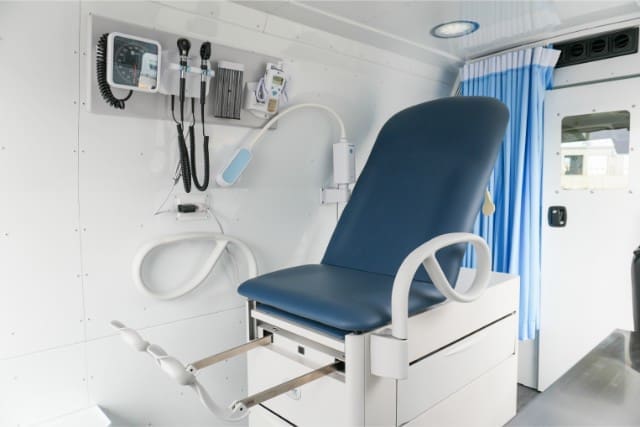
Once you have approval, you now have to define exactly what you’re looking for. This is the spec sheet. It details every feature your vehicle must have. From ramps and tie-downs to medical equipment and layout, it needs to be specific enough for vendors to bid on.
What it involves:
- Working with engineers or consultants
- Getting technical help from experts
- Checking compliance with provincial and federal regulations
How long does it take?
This can take weeks or even longer if you don’t have a template or expert support.
Step 4: Write the tender document
Now, you take the specs and turn them into a formal request, usually called an RFP or tender. This needs to be clear, legal, and fully detailed.
What it involves:
- Writing the document
- Making sure it’s compliant with procurement laws
- Getting legal or purchasing department sign-off
How long does it take?
A few weeks to a month.
Step 5: Advertise the tender
The RFP needs to be made public so vendors can see it. That usually means posting it to a procurement portal or website like MERX or Bids & Tenders.
What it involves:
- Submitting to online portals
- Waiting for vendors to respond
How long does it take?
Often, it takes 30 days, minimum, just to post.
Step 6: Open the bids
After the deadline closes, your team needs to review the submissions. That includes checking the paperwork, confirming specs match your needs, and making sure each bidder is compliant.
How long does it take?
Depending on how many bids come in, it will take a few days to a couple of weeks.
Step 7: Evaluate the bids
Now it’s time to score the bids. You compare price, timelines, qualifications, and sometimes even past performance. This part often involves a scoring matrix and input from multiple departments.
What it involves:
- Detailed evaluation
- Meetings and discussions
- Making final recommendations
How long does it take?
2–4 weeks or more.
Step 8: Award the bid
Once the top vendor is picked, your organization awards the contract. But you’re still not done.
What it involves:
- Final approvals
- Legal checks
- Communicating results to all bidders
How long does it take?
1–2 weeks.
Step 9: Negotiate the contract
Even after you’ve picked a supplier, you need to finalize terms. That means reviewing deliverables, warranties, payment terms, and timelines.
What it involves:
- Legal back-and-forth
- Confirming specs again
- Final sign-off
How long does it take?
It can be several weeks, especially if changes are needed.
Step 10: Issue a purchase order (PO)
Finally, you send a PO to the vendor. Now the vehicle can go into production.
Step 11: Receive your vehicle
Once built, your accessible van or mobile clinic is delivered. But from start to finish, this entire process can easily take over six months.
How does Canoe Procurement speed up the public RFP process?
Here’s where things get a whole lot easier.
MoveMobility is an approved vendor with Canoe Procurement Group of Canada. If your organization is a Canoe member, you can take advantage of pre-approved contracts that are fully compliant and competitively priced. These agreements let you choose the supplier that works best for you, giving you the freedom to buy what you need, without getting stuck in paperwork or delays.
That means we already have a contract in place that meets all the legal and competitive requirements for public sector purchasing. If your organization is a Canoe member, you can skip most of the public RFP process and buy directly from us.
What does Canoe Procurement do to help speed up the process?
With Canoe, all of these time-consuming steps are taken care of for you:
Build the vehicle spec: You can choose from pre-approved vehicle options or work with us to customize from a base model.
Write the tender document: No legal jargon or lengthy paperwork needed. Canoe Procurement has already handled the formal RFP process on your behalf.
Advertise the tender: You won’t need to post anything publicly or wait for vendor bids. That step’s already done.
Open the bids: Skip the piles of paperwork. Canoe has reviewed all submissions and ensured compliance.
Evaluate the bids: Competitive pricing? This is already vetted and approved by Canoe.
Award the bid: MoveMobility is already a pre-approved vendor through Canoe. That means you’re ready to move forward without delay.
Negotiate the contract: All contract terms have been agreed on in advance with Canoe. There’s nothing more you need to hash out.
Where does your organization pick up in the process?
Once you’ve decided what vehicle you need, you just:
1. Issue a purchase order (PO): This step tells us to get started on building your vehicle. It’s fast and easy, and there’s no waiting for approvals or reviews.
2. Receive your vehicle: Your custom vehicle goes into production, and we deliver it to you when it’s ready.
We partnered with Canoe Procurement to save you months of time throughout your purchasing process.
You’ll enjoy:
- Lower stress levels
- The ability to skip all of the red tape
- Not getting stuck in the long approval loops
This all means that your organization can focus on helping people sooner, and at the end of the day, that’s what matters most.
Ready to speed up your next accessible vehicle purchase?
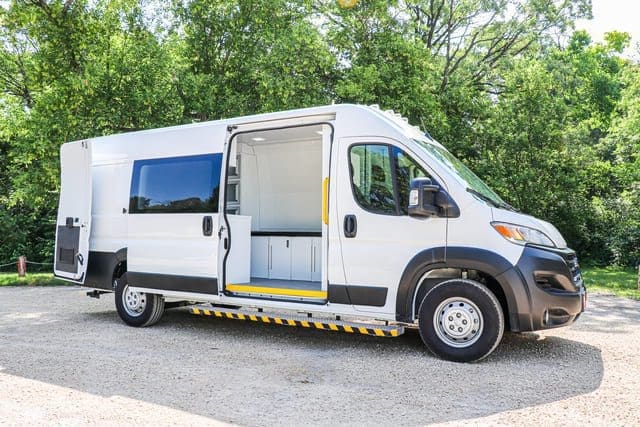
You likely came to this article out of curiosity, wondering if you can bypass the lengthy public RFP process. Now you know it is possible to skip seven steps in the process, saving you months of back-and-forth time.
Our team at MoveMobility has partnered with Canoe Procurement to make the entire purchasing process easier and quicker for you. Red tape often makes things more confusing than they need to be. If you have any questions about this new and exciting procurement process, don’t hesitate to click the button below to talk to a mobility expert.
If you’re not ready to talk to someone yet, we have a few other resources you might be interested in.
At this stage in the process, you might be looking for grants to help fund your project. Check out our wheelchair van grant article for more information.
Are you trying to fund a mobile medical unit instead? We have a funding article you should review, too!


